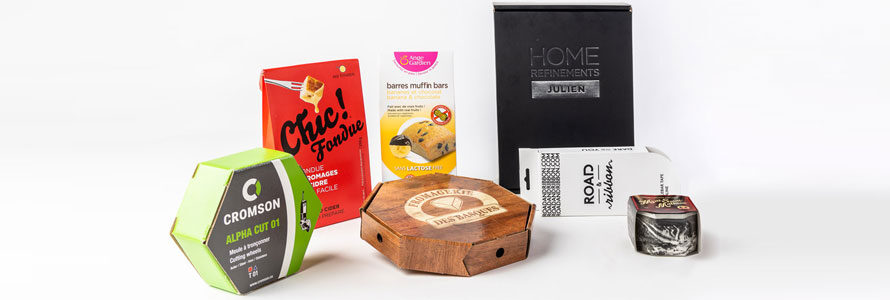
Ever wondered why some products seem to fly off the shelves while others struggle to gain attention? The secret lies in the packaging that surrounds them. Retail Packaging has a profound influence on consumer buying behavior, and driving sales.
In the bustling aisles of retail stores, amidst a sea of products, there’s a silent influencer that holds immense power over consumer buying behavior: retail packaging. Beyond its functional purpose, packaging plays a crucial role in capturing attention, evoking emotions, and ultimately persuading shoppers to make a purchase.
This blog post will dive into the world of retail packaging and explore how it exerts its influence over consumer decisions. Prepare to uncover the secrets behind this silent persuader and gain a fresh perspective on the impact of retail packaging on consumer buying behavior.
Retail Packaging to Influence Consumer Behaviour?
In the world of retail, where products compete for attention on crowded shelves, retail packaging plays a critical role in influencing consumer buying behavior. Beyond its primary function of protecting and containing products. Packaging has the power to capture attention, convey messages, evoke emotions, and ultimately persuade consumers to make a purchase.
Here’s how retail packaging exerts its influence over consumer decisions, shaping buying behavior and driving sales.
1. Visual Impact and Attention:
Retail packaging serves as the first point of contact between consumers and products. Its visual appeal and ability to stand out amidst a sea of competing items can make a significant difference in capturing attention. Eye-catching packaging, with vibrant colors, captivating imagery, and distinct typography, can draw consumers’ eyes and create curiosity, leading to further engagement with the product.
2. Perception of Product Quality:
Packaging plays a vital role in shaping consumers’ perceptions of product quality. A well-designed, sturdy, and aesthetically pleasing package can create a positive impression, suggesting that the product inside is of high quality. On the other hand, packaging that appears cheap or poorly designed may lead consumers to question the quality of the product itself. By investing in attractive and well-crafted packaging, brands can enhance the perceived value and desirability of their products.
3. Emotional Triggers and Brand Connection:
Packaging is capable of building an emotional link with customers. Thoughtful packaging design can tap into consumers’ aspirations, desires, and values, creating an emotional bond with the brand. Whether through storytelling, creative imagery, or clever branding elements. Packaging can evoke positive emotions such as joy, nostalgia, or a sense of belonging, influencing consumers’ buying decisions and fostering brand loyalty.
4. Consumer Trust and Packaging Transparency:
Packaging can instill consumer trust by providing transparent and informative content. Clearly labeled ingredients, nutritional information, and certifications assure consumers of the product’s safety, authenticity, and adherence to ethical standards. Packaging that communicates openness and honesty can build trust, encouraging consumers to choose a brand over its competitors.
5. Convenience and Practical Considerations:
Packaging that offers convenience and ease of use can have a significant impact on consumer buying behavior. Consumers appreciate packaging that is easy to open, resealable, and provides clear instructions for usage. Practical considerations such as portability, storage efficiency, and portion control can also influence purchasing decisions. Packaging that addresses these needs can provide a competitive edge and enhance the overall product experience.
6. Differentiation and Brand Identity:
In a crowded marketplace, packaging serves as a powerful tool for brand differentiation. Unique packaging design, innovative materials, or distinctive shapes can set a product apart from competitors and create a memorable brand identity. By carefully aligning packaging with the brand’s values, personality, and target audience. Businesses can attract attention, reinforce brand recognition, and establish a competitive advantage.
7. Unboxing Experience and Shareability:
The rise of social media has given birth to the trend of “unboxing therapy” where consumers film and share their experiences of opening and interacting with products. Packaging that offers a delightful, surprising, or immersive unboxing experience can generate excitement, encourage user-generated content, and boost word-of-mouth marketing. Positive unboxing experiences contribute to brand advocacy, driving consumer engagement and loyalty.
Conclusion:
Retail packaging is a powerful influencer of consumer buying behavior. From capturing attention and conveying product quality to evoking emotions, building trust, and enhancing convenience. Packaging plays a multifaceted role in shaping consumers’ perceptions and decisions. By investing in well-designed, thoughtful packaging that aligns with brand values and resonates with target consumers. Businesses can leverage this influential factor to drive sales, foster brand loyalty, and stand out in the competitive retail landscape.
As we conclude this concise exploration of retail packaging’s influence on consumer buying behavior, it becomes clear that packaging is far more than just a wrapper. It serves as a persuasive force, influencing perceptions, emotions, and ultimately purchase decisions. By understanding the impact of packaging on consumer psychology, businesses can harness its power to captivate shoppers, build trust, and differentiate their brands in a competitive marketplace. So, next time you reach for a product, take a moment to appreciate the packaging that surrounds it – for it holds the secrets to unlocking the minds and wallets of consumers.


